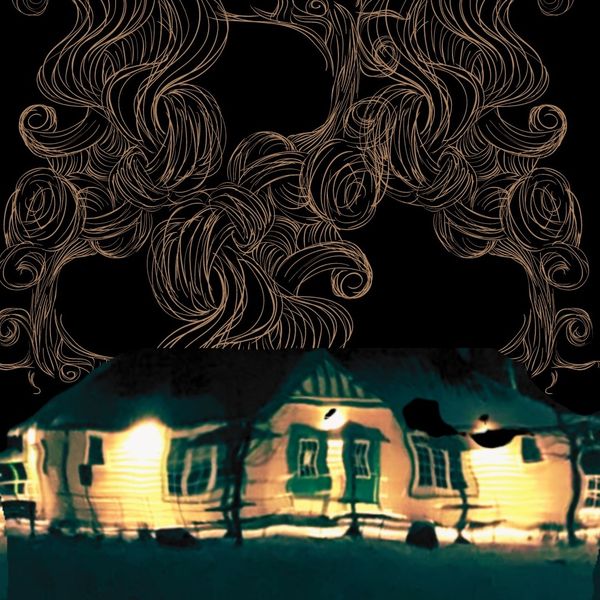by Cody Siler
In February, The New York Times published an article about the Pandemic Journaling Project, which aims to capture “the raw stuff of history” via a study of 700 diaries written during the coronavirus epidemic. The Times attributes “the germ of the idea” to an email sent by Richard Brown, a professor at University of Connecticut, last March, but they could look back further for a historical example of the genre: a book called The Gray Notebook.
“There is so much influenza about that they’ve had to shut the university.” That’s the first line of Josep Pla’s masterpiece, written in 1918, published 49 years later and set in Catalonia during the outbreak of Spanish flu. Its author was 21 when he started the diary. A law student, he had just been sent home to his parent’s house in Empordà, a rural region 60 miles north of Barcelona known for its rice fields and cork trees.
Like the participants in the Pandemic Journaling Project, Pla wasn’t planning to publish. He calls writing a “superfluous” activity, and he berates himself for shirking his studying to journal instead. He edited the diary heavily in the half-century before its publication, so it’s not a word-for-word reproduction of his youthful musings (who can blame him?) but it is, unmistakably, a diary. The NYRB English translation runs to a hefty 638 pages, and there is no arc, no crisis of character, no thread of tension that would identify it as a dramatic literary work. Instead, it consists of cafe-napkin sketches and brief scenes, with a few interspersed longer vignettes.
Pla has moments of introspection and of familiar anxiety: “Inevitably,” he writes, “we all have, have had, or will have influenza.” He has flashes of self-loathing, doubts about law school. But his inner monologue builds towards no crescendo—another signal that we’re reading a diary, not autofiction. Instead, it serves as an accent for the real heart of the book, which comes when Pla turns his gaze outward.
His prose is at its best when he describes Empordà. The food: grilled mushrooms, sardines dripping with oil on toast, black rice with stewed rabbit, pigeon and aioli, white wine, blood sausages. Long walks through the country that he narrates like a cynical monk. Vigorous arguments at the bar, depicted with sympathy and glee. The fishermen, the wine-growers, the americanos, the cork farmers, and the rest of the people who occupy Empordà, whom Pla paints with a delicate affection that’s rarely cloying.

Like the contemporary diarists studied by the PJP, his inner self is inconsistent. The introspective portions of his writing are contradictory and self-aggrandizing. Even on the question of his “secret, devilish, manic need to write,” that “hobby” that has “disfigured” him, he’s not clear. Is it “taking a stand against [his] times” or is it “frivolous”? The simplest explanation is that, like many of us, he’s lonely, stuck in his parents’ attic and searching for an outlet—in keeping with the mission of the PJP, which the NYT associates with the therapeutic practice of “expressive writing.”
It’s ironic, then, that the book’s best moments are its least “expressive,” at least in the psychologist’s sense of the word. Pla’s navel-gazing falls flat, but his descriptions of Empordà are beautiful; they capture the vital energy of rural life without veering into cheap nostalgia, and they clearly show the skill for observation and dialogue that would earn Pla his place as the elder statesman of Catalan literature.
You could read the book as the story of a young writer finding a voice; in the end, Pla gets a job as a journalist and leaves for Paris. But its most joyful moments are too clearly oriented outward for it to be, in sum, about the character of Pla himself. Just like the irresponsible 21-year-old who gets shouted at by his mother for coming home drunk, The Gray Notebook gleefully shrugs off its narrative obligations at every turn. It is sprawling but somehow self-contained, a contradiction that justifies itself with every word.
“Writing,” Pla says, “is a struggle against excess and the infinite.” When he is adrift and confined, he finds salvation in small details. In the end, what helps him is not expressive writing but its opposite: a keen gaze leveled at the material reality of the world around him. He sublimates ego into art, and he makes it through. He goes back to Barcelona and he gets a job. The pandemic ends in 1920. In 1924 he is exiled from Spain by the dictator Primo de Rivera for criticizing Spain’s colonial policy in Morocco. To borrow a phrase from the PJP’s Richard Brown, Pla is “thrust into history,” just like us. And as we search for a path through the moment, The Gray Notebook offers a hint: look out, not in.


Cody Siler is a writer based in Berkeley, CA. Get to know him better: @soup_pics
*Thumbnail image: La macía (The Farm) by Joan Miró, 1921-1922



